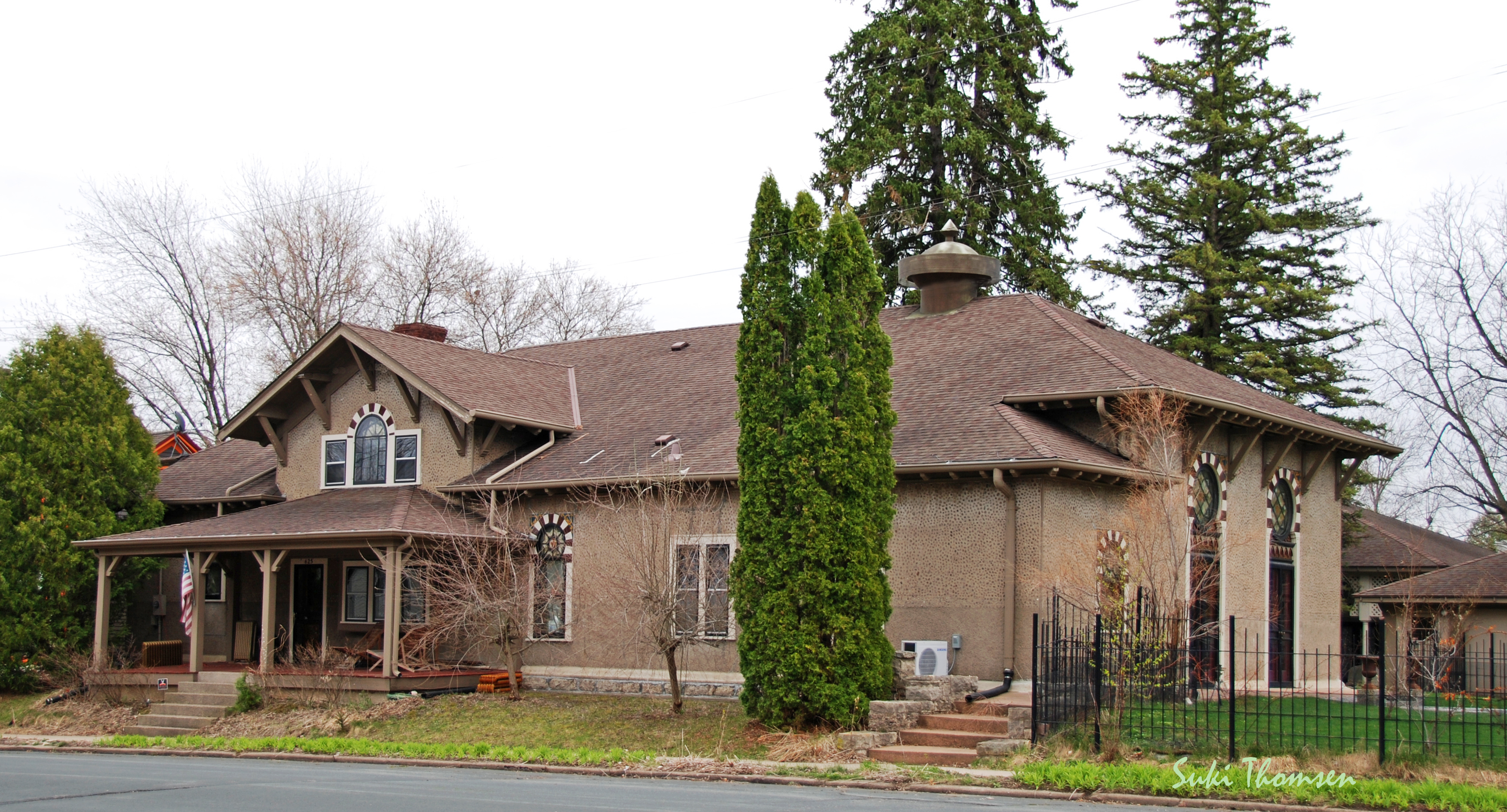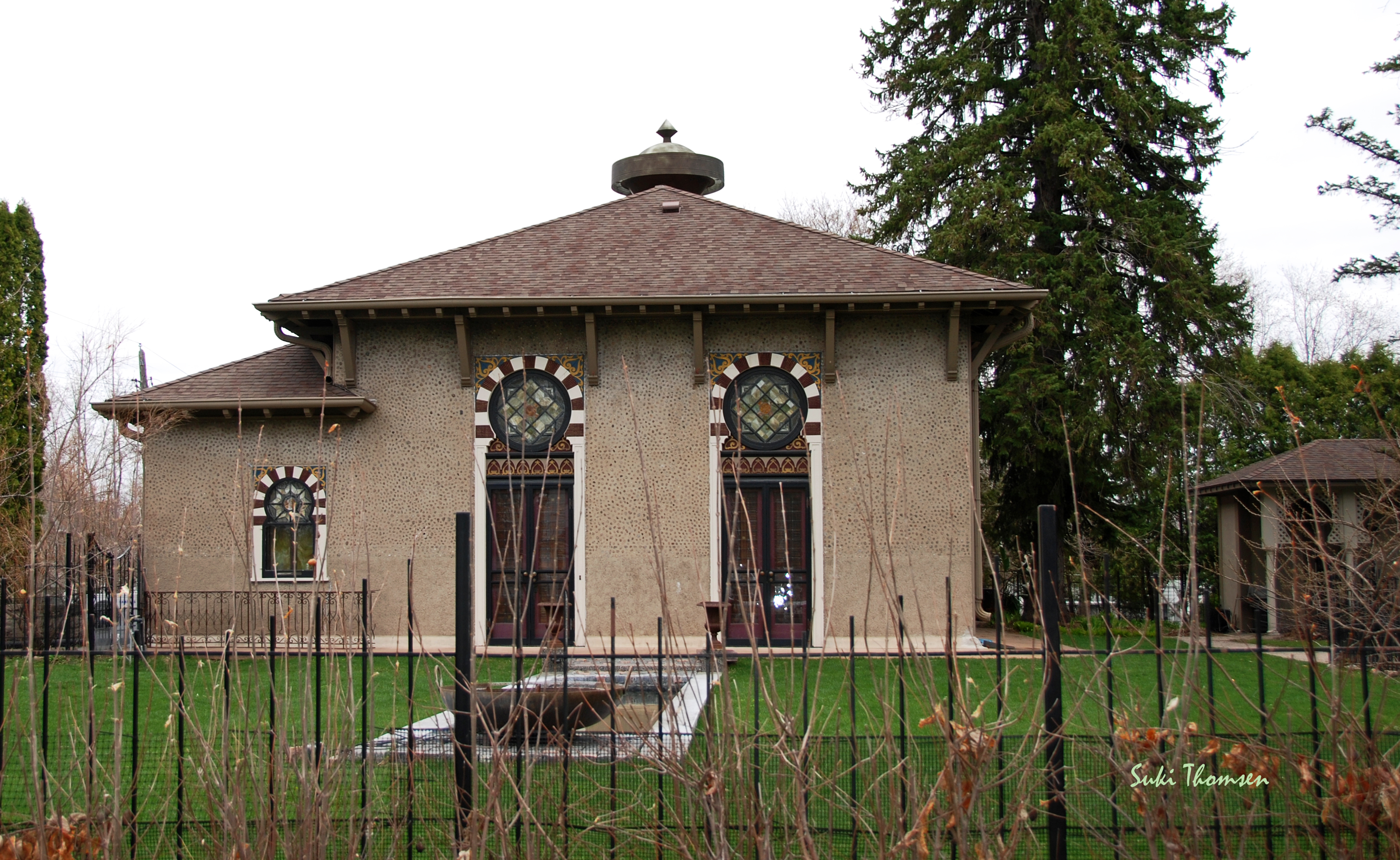Landmark Site
National Register of Historic Places - Individually Listed Property
Sauntry Recreation Hall
William Sauntry, raised in New Brunswick, Canada, came to Stillwater in a second generation of St. Croix loggers and began a career in a partnership with noted Stillwater lumberman Albert Tozer. Gaining the trust of the Weyerhauser interests, he leased stock in the St. Croix Boom company and was charged with building and managing the Nevers Dam. He also had interests in other lumbering companies, with his wealth eventually estimated at two million dollars.
In 1881, Sauntry commenced the construction of what was to become an elaborate home at 626 North Fourth Street, now a Stillwater Landmark house.
In what may have begun as the simple installation of a billiard room in the home and a tennis court on the lawn in 1889, by 1902, Sauntry’s appreciation and desire for recreation and fashionable architectural statements grew into the construction of his own Recreation Hall adjacent to the home. The building permit lists Wilson and Marshall of Chicago as the architectural firm, and William Biegung as the local builder who executed the plan… at a cost of $7000. This was not the only gymnasium in town, as fellow lumberman George Atwood had previously constructed a private gymnasium by his mansion, and such spaces were not uncommon in elaborate homes across the country. A separate structure, however (albeit connected by a walkway), was an elaborate effort, and Sauntry’s was very unusual.
The well-preserved Craftsman/Exotic Revival exterior, with a hipped roof supported by strong brackets, unique stone- embedded stucco exterior and elaborate arched art glass windows, hints at the building’s elegant interior. At 5000 square feet, the Recreation Hall once included a one-lane bowling alley, an indoor swimming pool and a ballroom. These features were familiar to members of those wealthy families who at the time followed the ideals of having a "country estate," dedicated to a healthful life and pursuit of productive leisure activities. Sauntry’s Hall, however, took its theme from the elaborate Alhambra palace in Granada, Spain, in all of its fantastical and painstaking Moorish detail along with elements of the Craftsman tradition. The high-ceilinged ballroom was decorated with a ceiling mural, carved plaster, gilded medallions, and crystal chandeliers, along with 14-foot, 250-pound mirrors. Stencils of Arabic inscriptions (said to be installed backwards by local artisans who did not understand their significance) are also found on the walls. Upon its initial opening, the local paper called it a "Fairyland."
The Fairyland, it appears, did not reflect some darker truths, as William Sauntry committed suicide in 1914, and the Hall and house were sold. In 1920, new Hall owner Margaret Kaiser applied for a permit to convert the building, valued at $5000-$6000, into three apartments under the direction of local contractor E. H. Biegung. The Recreation Hall remained under Margaret Kaiser’s ownership through the mid 1960s, and in city directories she is listed as the sole occupant at this address. However, the 1930 census indicates that she shared the home with her adult children, and that Victor Dunder, a school teacher, rented part of the house. The Recreation Hall was then sold to state prison superintendent Raymond Marty, Jr., and his wife, Dorothy, who owned the building for the next decade. City directories suggest indicate that the Hall was not officially recognized as an apartment house until the 1980s, but the building permit and anecdotal evidence suggest that the Hall was occupied consistently as a three- or four-unit dwelling.
The Recreation Hall is as notable for its recent history as it is for its past, due to the dedicated and exhaustive six years of work conducted by the current owners in the hall’s restoration and adaptive reuse. Now a private home, the owners were able to restore much of the home using a few remaining photographs and returning architectural elements that had been removed to the attic to original and other useful applications. The bowling area now serves as children’s bedrooms, pool marble has been reused in a bathroom, and the pool area itself has become the home’s kitchen. The remarkable ballroom has been restored to its earlier splendor, including its original maple floors, and is now the family’s living and entertaining area.
Source(s): City Directory. Stillwater: R. L. Polk and, Various. Print.
Janisch, Kris. "Peeking into the past William Sauntry Moorish-style Gym Opens for Tour, Historical Society Benefit." Stillwater Gazette. 26 Sept. 2006. Web. 22 Apr. 2011.
Washington County Parcel Identification Number (PIN): 2803020240004
Common Property Name: Sauntry Recreation Hall
Neighborhood: North Hill (Original Town)
State Historic Preservation Office Inventory Number: WA-SWC-430
Construction Date: 1902
Architectural Style: Exotic Revival
NRHP: National Register of Historic Places - Individually Listed Property - 4/20/1982

